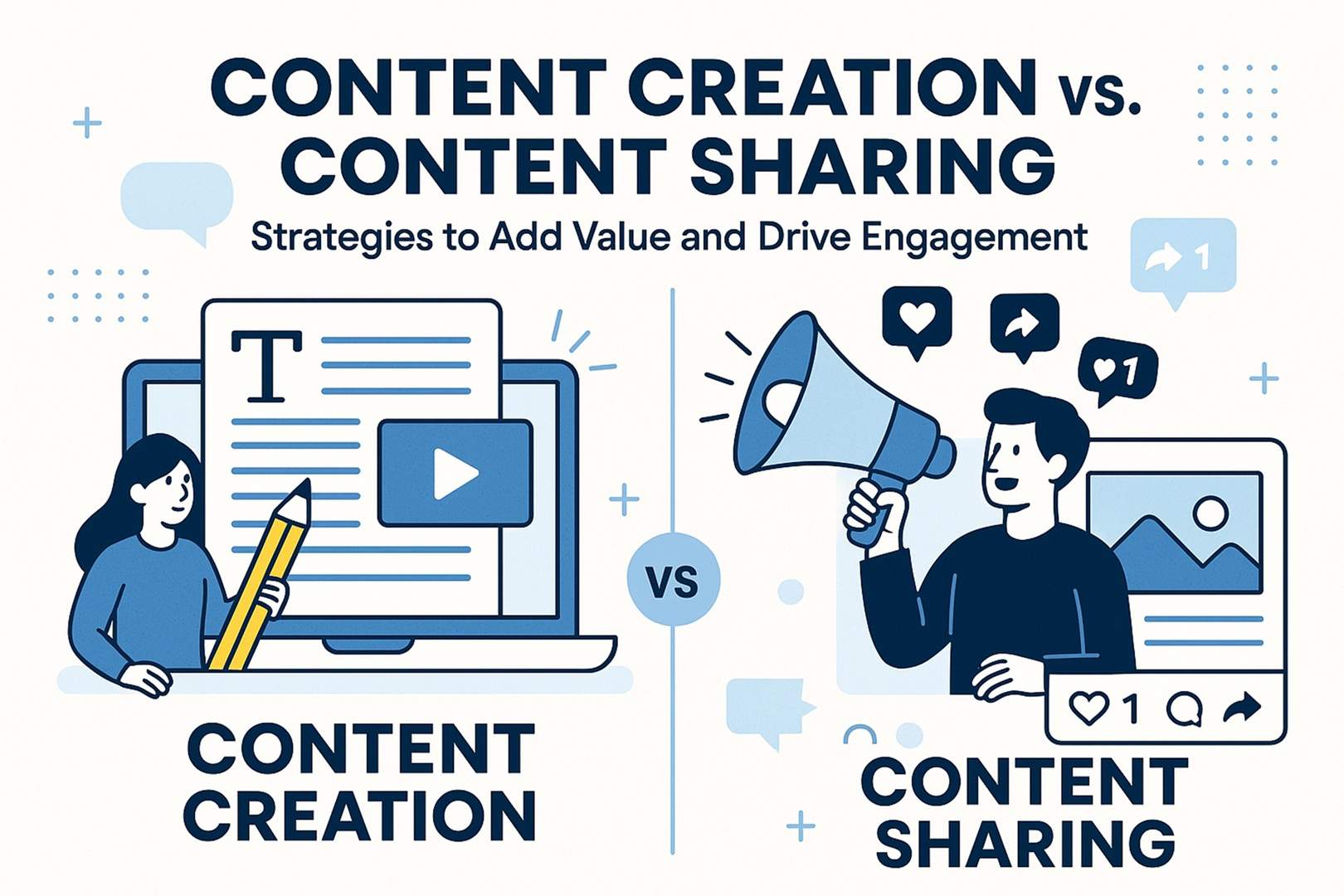Content Creation vs Content Sharing: Strategies to Add Value and Drive Engagement
Learn the difference between content creation and sharing, how to add value to your audience, and actionable steps to optimize both strategies for growth.
Content Creation vs Content Sharing: Core Differences
Content Creation: Developing original material (blogs, videos, infographics) tailored to your audience’s needs.
Content Sharing: Distributing existing content (yours or others’) via social media, newsletters, or forums to amplify reach.
How to Add Value to Someone’s Life by Content Creation
Solve Problems: Address pain points (e.g., “How to fix a leaking faucet in 5 steps”).
Educate: Simplify complex topics (e.g., cryptocurrency for beginners).
Inspire: Share success stories or motivational journeys.
Entertain: Create relatable humor or storytelling (e.g., day-in-the-life vlogs).
Example: A finance creator’s video on “How to save ₦10k monthly” helps viewers achieve tangible goals.
What’s Your Main Goal with Content Creation?
Goals vary by niche but often include:
Building brand authority.
Generating leads or sales.
Educating or entertaining a specific audience.
Strengthening community engagement.
The 7 Steps of Content Creation
Research: Identify audience needs via surveys or keyword tools.
Plan: Outline topics aligned with goals (e.g., blog calendar).
Create: Produce content (write, film, design).
Optimize: Add SEO keywords, meta descriptions, and CTAs.
Review: Edit for clarity, accuracy, and tone.
Publish: Share on chosen platforms.
Promote: Distribute via email, social media, or partnerships.
How to Create and Share Content Effectively
Leverage Tools:
Creation: Canva (design), Grammarly (editing).
Sharing: Buffer (social scheduling), Pocket (curation).
Repurpose Content: Turn blogs into infographics or podcast episodes.
Time It Right: Post when your audience is most active (e.g., 8–10 PM in Lagos).
Guidelines for Effective Content Creation
Audience-Centric: Prioritize their needs over self-promotion.
Consistency: Maintain a regular posting schedule.
Quality Over Quantity: One well-researched post trumps five rushed pieces.
SEO Basics: Use keywords, alt text, and mobile-friendly formats.
What Does a Content Creation Process Look Like?
A fitness influencer’s process:
Audience Insight: Followers want quick home workouts.
Keyword Research: Targets “15-minute HIIT routine.”
Filming: Records a workout video in natural light.
Editing: Adds captions and trending music.
Publish & Share: Posts on YouTube, shares snippets on Instagram Reels.
The Most Marketable Form of Content Creation
Video Content dominates due to high engagement and algorithm favoritism. Examples:
Short-form (TikTok, Reels).
Tutorials (YouTube).
Live streams (Q&A sessions).
Example of Content Creation
A Nigerian food blogger:
Creates: A blog post titled “10 Easy Jollof Rice Hacks.”
Optimizes: Uses keywords like “quick Nigerian jollof recipe.”
Shares: Posts the blog on Pinterest and TikTok recipe clips.
How to Make Content More Shareable
Spark Emotion: Use humor, awe, or nostalgia (e.g., “Remember these 2000s Nigerian snacks?”).
Simplify Sharing: Add social media buttons to blogs.
Encourage Action: Ask, “Tag a friend who needs this!”
Collaborate: Partner with micro-influencers to expand reach.
Key Takeaways
Content Creation builds authority; Content Sharing amplifies visibility.
Align both strategies with audience needs and measurable goals.
Use data (engagement rates, shares) to refine your approach.

